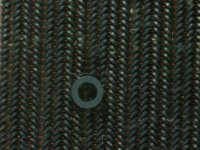thunter0512
Veteran Member
Looking at the schematics for the H212 (MM8-EJ) I see that EMA2 appears on drawing sheet 3 and is coupled to E14 pin 9 via wire link W1.
EMA2 should select between the upper and lower 4K banks.
I am just thinking out aloud here...
If W1 is removed - could we strap E14 pin 9 to ground or a convenient VCC pull-up resistor to make it a HIGH 4K or LOW 4K card - with the operational 4K appearing in the low addresses?
This might overcome the initial problems whilst we work on a full rectification for the other 4K half. Reversal should then be simple enough?
You really need to fix the problem in some way or another - otherwise you will be stuck running your own programs (as real-world programs - e.g. the assembler and compilers) will use this memory area and crash.
EDIT: Doesn't E11/9 connect to E10/3 and E10/4 connect to E11/10? This then goes off to the core stack on XPRD3? With E10 being an IC transformer and E11 being a transistor array? Or am I on the wrong schematic?
Dave
Thanks Dave,
Yes the MM8-EJ board kit could be modified to turn it into a 4K kit but fortunately the owner of the Lab-8/E found a H212 board so I am up and running (see my previous reply to Kevin).
As to your "EDIT:" I think you are looking at the wrong schematic. There are no transistors arrays or transformers on the H212 board. The H212 board schematics are just a bunch of diode arrays. It is on page 15 of the "MM8-EJ_Engineering_Drawings_May_73.pdf" from Bitsavers in the "pdp8e" directory.
Here is a picture with the open-circuit core wires pads highlighted:

Thanks and best regards
Tom Hunter

